Critter Corner
One of the popular features of the Science Learning Center is the Critter Collection—an assortment of common invertebrates (animals without backbones) that visitors can touch and examine up close. But you can now experience these invertebrates, live, from the comfort of your own home or classroom.
Suggested Activity
As you watch the videos of these critters, try to make notes about the following:
- How would you describe their shape and form?
- What do you notice about how they move?
- How do they interact with other critters?
Animals featured here include the following:
- mealworms
- darkling beetles
- garden snails
- pillbugs
- desert ironclad beetles
- Madagascar hissing cockroaches
- painted lady butterflies
Mealworm

Mealworms are the larval form of a darkling beetle (a common black beetle). Mealworms are not really worms—they have 6 legs as all insects do.
They eat grains, vegetation and decaying matter.
These larvae will go through a metamorphosis, just as butterflies do, forming a pupa, and then emerging as a beetle.
Darkling Beetle
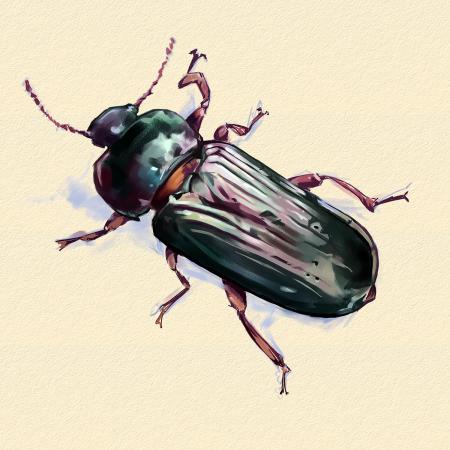
This is a common name given to over 100 species of beetles found throughout the United States. They have wings, as all beetles do—however, the wings are fused and they are unable to fly.
These insects eat plants and decaying vegetation.
Mealworm larvae emerge as darkling beetles; their color is light at first, then becomes darker (brown then black) over time.
Garden Snail
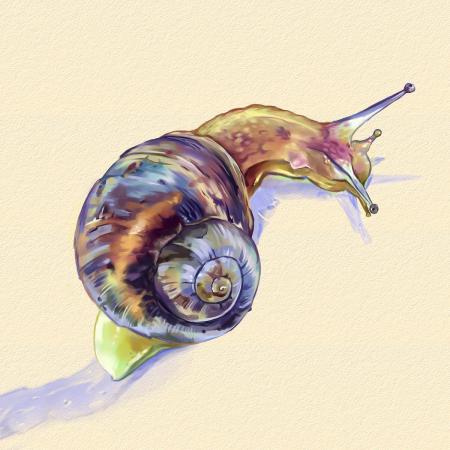
Garden snails are mollusks (other mollusks include scallops, mussels, and abalone, found in the ocean). These animals retract into their shell when they sense danger or when the environment gets too dry.
They eat different kinds of vegetation, and are often considered pests.
The animal moves along on its 'foot,' creating mucus or slime that helps it to slide across a surface.
Pillbug

Pillbugs, as known as roly polies, are not insects. They have a segmented body like insects, but have 14 legs and gills (instead of lungs).
They eat decaying matter and vegetation.
These animals are actually crustaceans (like crabs and crayfish) and need a moist environment to survive.
Desert Ironclad Beetle
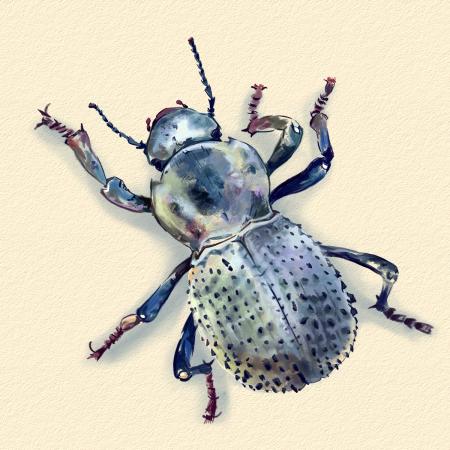
Desert ironclad beetles are known to play dead when they feel threatened by predators, earning the nickname 'Death-Feigning Beetles.' Native to dry and sandy habitats, they are adapted to withstand extreme temperatures with hardened forewings that interlock tightly to trap moisture within their body.
They eat fresh and rotting plant material.
Their entire body is a typically a steely blue color from the wax they secrete.
Madagascar Hissing Cockroaches
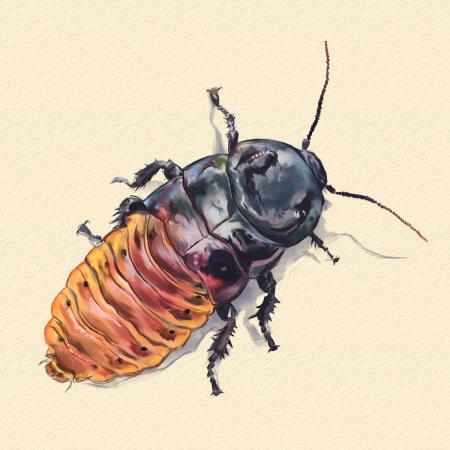
Madagascar hissing cockroaches are one of the largest species of cockroaches, known for their unique ability to produce a hissing sound. With their hissing, they communicate and establish dominance within their groups. Though they may seem intimidating, they are popular for their docile nature.
These insects are detritivores, feeding on decaying plant and animal material.
They are essential to rain forests since they recycle nutrients back into the ecosystem.
Painted Lady Butterflies
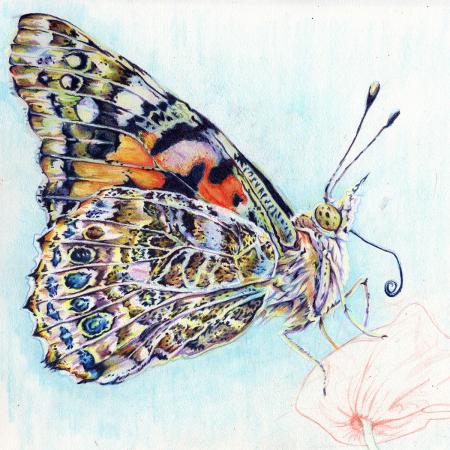
Painted Lady Butterflies are the most widespread species of butterfly. They can be found in nearly all continents and climates.
Like all butterflies, they go through a metamorphosis with four distinct stages: egg, caterpillar (larva), pupa (chrysalis), and adult.
The adults feed on nectar from various flowering plants while the larvae eat weeds and leaves.
Their wing patterns are not uniform; instead, they have splashes and dots of color. The upper wing has orange and brown while the underside is much duller with brown and gray.
Acknowledgements
Illustrations provided by Jonathan Broberg, CSULB Biology student, Instagram: @jonbro_art








